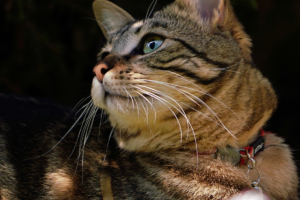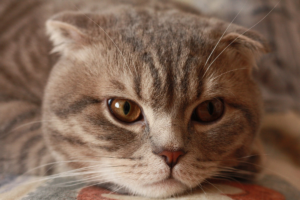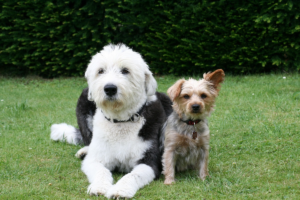Welcome to our guide to puppy training! Whether you’re a first-time puppy parent or an experienced dog owner, treinamento de filhotes can be a challenging but rewarding experience. Training your puppy can help establish a strong bond while creating a foundation for a well-behaved companion. In this section, we will provide essential tips and techniques to help you successfully train your furry friend.
Key Takeaways
- Training your puppy is important for creating a well-behaved companion
- Establishing a bond between you and your puppy is crucial for effective training
- Basic commands are fundamental to successful puppy training
- Positive reinforcement techniques can encourage good behavior
- Crate training and socialization are both valuable tools for puppy training
1. Understanding the Importance of Puppy Training
Puppy training is more than just teaching your furry friend simple commands. It can shape your pup’s future behavior and development, making it a crucial aspect of responsible pet ownership.
The benefits of puppy training are numerous and long-lasting. A well-trained dog is a happy dog, and a happy dog makes for a happy owner. Some of the top benefits of puppy training include:
- Improved obedience
- Better communication between owner and dog
- Increased socialization skills
- Reduced likelihood of destructive behavior
- Higher levels of exercise and physical activity
- Greater safety for your dog and others
By investing time and effort into training your puppy, you can establish a strong bond and enjoy a happy and well-behaved companion for years to come.
2. Basic Commands for Puppy Training
Teaching your puppy basic commands is crucial in establishing good behavior and communication. Start by using a positive, encouraging tone and rewarding your puppy’s efforts.
Here are some essential commands to begin with:
| Command | Description |
|---|---|
| Sit | Ask your puppy to sit by holding a treat above their head, then give the command “sit” and reward them when they sit down. |
| Stay | Start with your puppy in a sitting position and say “stay”, take a step back, and then reward them. Gradually increase the distance and duration of the stay. |
| Come | Get your puppy’s attention with their name and then say “come”. Reward them when they come to you. Repeat until they come consistently. |
Remember to keep training sessions short and positive, gradually building up to more advanced commands as your puppy learns. Good luck with your treinamento de filhotes!
3. Positive Reinforcement Techniques for Puppy Training
If you want to train your puppy effectively, positive reinforcement techniques can make a world of difference. Instead of punishing your furry friend for bad behavior, these techniques focus on rewarding good behavior, which can lead to faster, more lasting results.
Here are some positive reinforcement techniques you can use during treinamento de filhotes:
- Clicker Training: This method involves using a clicker to signal to your puppy that they have done something right, followed by a treat as a reward. Over time, your puppy will associate the click with a positive experience, which can help reinforce good behavior.
- Verbal Praise: Give your puppy plenty of verbal praise when they do something right, using cheerful and enthusiastic tones. This helps reinforce positive behavior and can also strengthen your bond with your furry friend.
- Treat Rewards: Use treats as rewards for good behavior, such as sitting on command or coming when called. Be sure to use high-quality treats that your puppy finds especially appealing, which can make the reward more meaningful.
- Playtime and Affection: Dogs crave attention and affection, so use plenty of playtime and cuddles as a reward for good behavior. This can help reinforce your bond with your puppy and create a positive association with good behavior.
3.1 Why Positive Reinforcement Works
Positive reinforcement techniques work by creating a positive association between good behavior and rewards, making it more likely that your puppy will continue to exhibit positive behavior in the future. Punishing your puppy for bad behavior, on the other hand, can create fear and anxiety, which can actually make behavior problems worse over time.
By incorporating positive reinforcement techniques into your treinamento de filhotes, you can help your furry friend feel confident, happy, and well-behaved, setting the stage for a lifetime of fun and companionship.
4. Crate Training for Puppy Training
Crate training is an excellent way to housebreak your puppy while also providing them with a safe and secure space to call their own. Introducing your puppy to the crate correctly is crucial to ensuring a positive and successful training experience.
4.1 Introducing the Crate
To begin, place the crate in an area of your home where your puppy spends a lot of time. Allow your puppy to explore the crate at their own pace, placing some treats and toys inside to entice them. Do not force your puppy to enter the crate but encourage them with praise and positive reinforcement when they do.
4.2 Making it a Positive Experience
Once your puppy is comfortable entering the crate, begin feeding them near (but not inside) the crate, gradually moving the food bowl closer to the crate each time. This will help your puppy associate positive experiences with the crate and create a positive association.
4.3 Using the Crate as a Training Aid
As your puppy becomes more comfortable with the crate, you can begin using it as a training aid. For example, you can place your puppy in the crate when you need to leave the house or when it’s time for them to sleep. Make sure to leave some toys and treats in the crate with your puppy to keep them entertained and occupied.
Remember to never use the crate as a form of punishment, as this can create negative associations and undo all your hard work.
5. Socialization Tips for Puppy Training
Proper socialization is essential for the well-being of your puppy. It helps them become more confident, friendly, and less fearful of new situations. Here are some tips to ensure your puppy gets the socialization they need:
5.1 Expose your puppy to different environments
Introduce your puppy to new environments, such as the park, the beach, or a busy street. This will help them become accustomed to different smells, sights, and sounds. Start with short visits and gradually increase the duration of each outing as your puppy grows more comfortable.
5.2 Let your puppy meet new people
Introduce your puppy to a wide variety of people, both adults and children. Make sure to supervise the interactions and encourage positive behaviors. Use treats and praise to reward your puppy for being friendly and sociable.
5.3 Introduce your puppy to other animals
Let your puppy interact with other dogs, cats, and other household pets. It’s important to supervise these interactions to ensure they remain safe and positive for your puppy. Use treats and praise to reward your puppy for being friendly and well-behaved around other animals.
| Do: | Don’t: |
|---|---|
| Introduce your puppy to new experiences gradually | Rush the socialization process |
| Use treats and praise to encourage positive behaviors | Punish your puppy for being fearful or shy |
| Supervise all interactions | Force your puppy into unfamiliar situations |
Remember, the more positive social experiences your puppy has, the more confident and well-adjusted they will be. By socializing your puppy, you are laying the foundation for a happy and well-behaved companion.
6. Conclusion
Congrats on making it to the end of our article on treinamento de filhotes, or puppy training! We hope these tips and techniques have been helpful in establishing a strong foundation for training your furry companion.
Remember, investing time and effort into training your puppy can pay off with a happy, well-behaved companion. By using positive reinforcement techniques, teaching basic commands, and providing socialization opportunities, you can set your puppy up for success.
Thank you for reading, and best of luck on your puppy training journey!
FAQ
What is the best age to start puppy training?
It is recommended to start puppy training as early as 8 to 10 weeks old. This is the prime time for them to learn and adapt to new experiences.
How long should each training session be?
Training sessions should be kept short, around 10 to 15 minutes, as puppies have short attention spans. It’s better to have multiple short sessions throughout the day rather than one long session.
Can I train my puppy at home or should I seek professional help?
While you can start with training your puppy at home using basic techniques, it is advisable to seek professional help, especially for complex behaviors or if you encounter difficulties in the training process.
Are treats necessary for training?
Treats are a common and effective way to reward your puppy during training. However, they are not the only option. Verbal praise, playtime, and affection can also be used as rewards.
How do I potty train my puppy?
Potty training requires consistency and patience. Take your puppy outside frequently, especially after waking up, eating, or playing. Reward them when they eliminate outdoors and clean any accidents inside immediately without punishment.
What should I do if my puppy exhibits unwanted behavior?
If your puppy exhibits unwanted behavior, it is important to redirect their attention and provide an alternative behavior. Avoid punishment, as it can create fear and anxiety. Consistency and positive reinforcement are key.
How can I socialize my puppy?
Socialization involves exposing your puppy to various environments, people, and other animals. Gradually introduce them to new experiences, reward positive interactions, and seek controlled socialization opportunities such as puppy classes.
Can older dogs be trained?
Yes, older dogs can be trained, although it may take more time and patience. Basic obedience training and behavior modification techniques can still be effective in shaping their behavior and improving their skills.
How can I prevent my puppy from biting?
Puppies explore the world with their mouths, so it’s important to teach them bite inhibition. Provide appropriate chew toys, redirect their biting to those toys, and discourage rough play. Consistency and positive reinforcement will help them learn.
Is punishment an effective training method?
Punishment is not recommended as a training method. It can create fear, anxiety, and aggression in puppies. Positive reinforcement, such as rewards and praise, is a more effective and humane way to shape their behavior.




